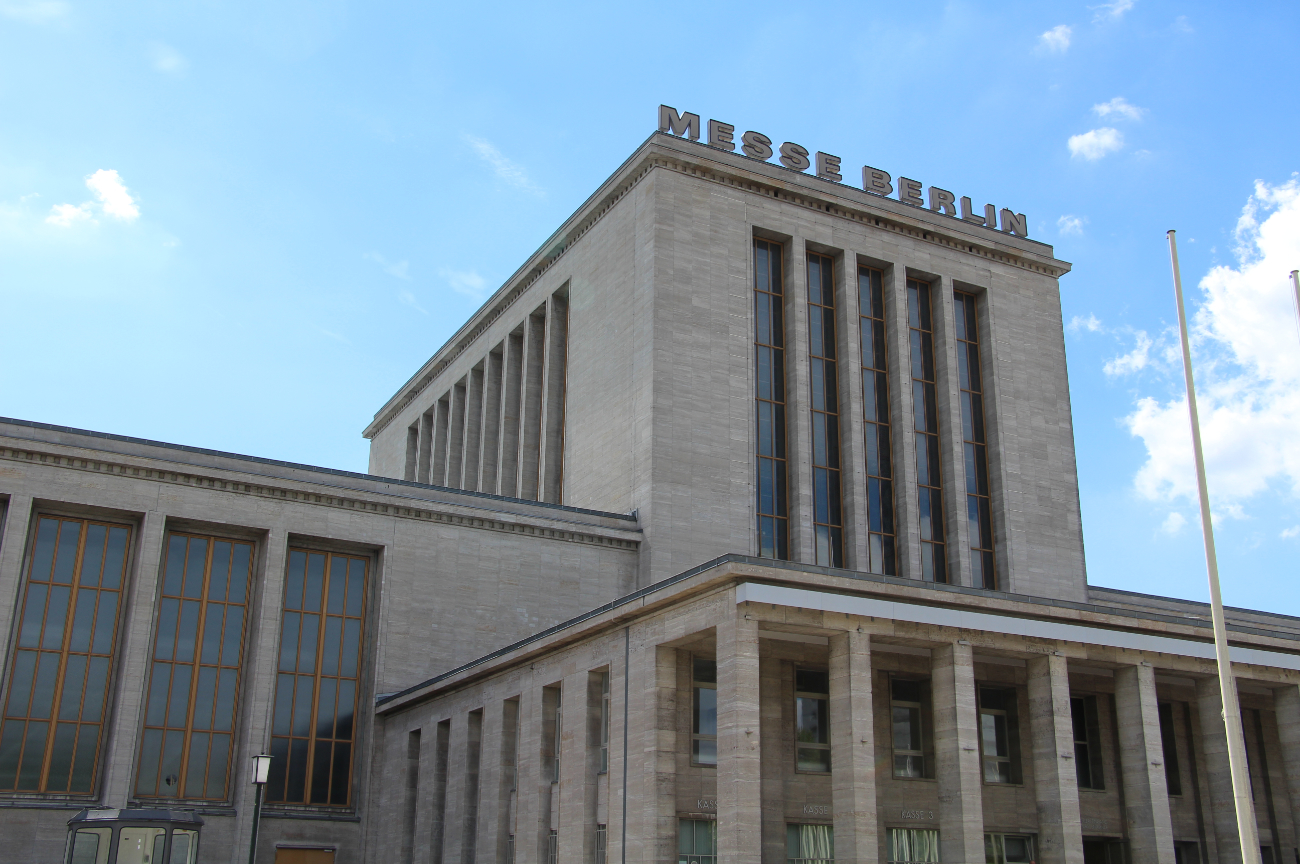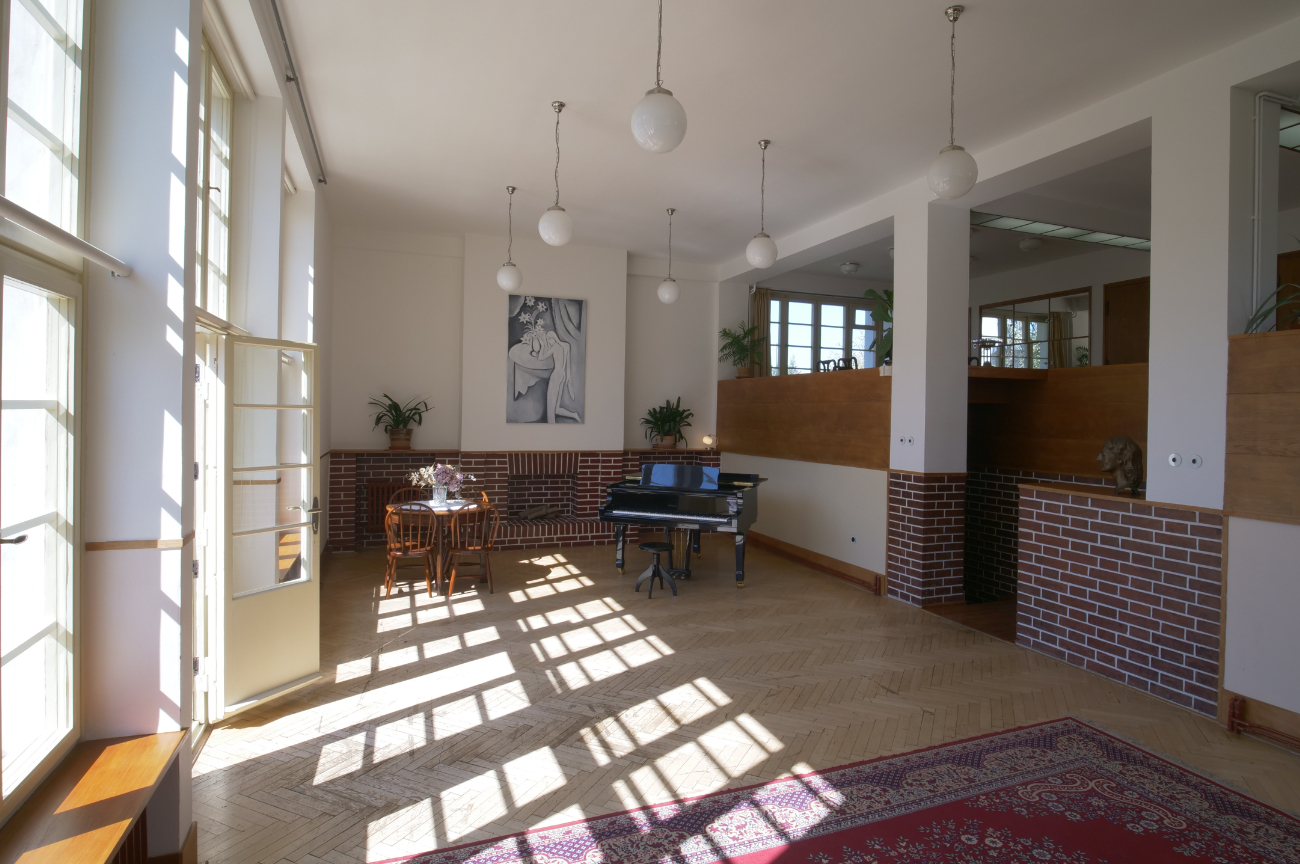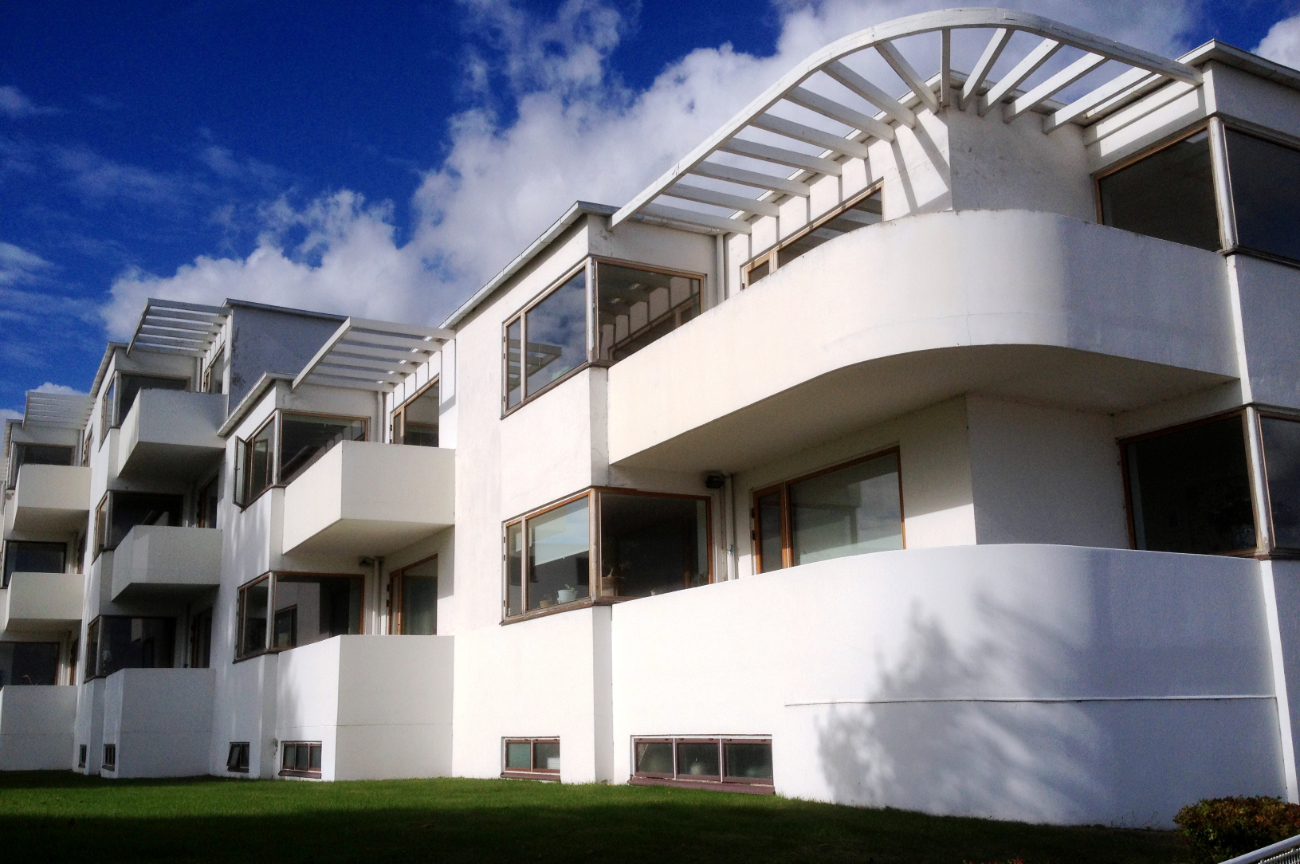Top 3 European cities for modernist architecture
Norman Miller
It’s been 100 years since the birth of modernism and its new way of looking at the world. Celebrate with a city break and see some of the best architecture of the era

Palais am Funkturm, Berlin - Norman Miller
Berlin
The seeds of Berlin’s modernist DNA owe much to an architecture practice run by Peter Behrens just before World War I, which for several years employed three seminal figures in the history of the international style: Walter Gropius, Charles-Édouard Jeanneret (aka Le Corbusier) and Ludwig Mies van der Rohe. Corbusier went off to make awesome buildings across France, while van der Rohe and Gropius left to found the illustrious Bauhaus School.
Heavily bombed during World War II, Germany’s capital turned to architects informed by its modernist ideals. Mies van der Rohe created the Neue Nationalgalerie (opened in 1968), while the Bauhaus Archive was one of the last buildings designed by Gropius. Another 1960s modernist masterpiece you must see is Kino International, a shining white 1963 jewel designed by Josef Kaiser and Heinz Aus.
The years just before the Nazi takeover saw the appearance of buildings such as the Shell House, whose distinctive wave-like high-rise facade rises over the Landwehr Canal. It was designed by Emil Fahrenkamp and finished in 1932.
Other modernist Berliner wonders include the Kulturforum Berliner Philharmonie, Gropiusstadt, Märkisches Viertel, and the Hansaviertel. The ravishing mid-century cool of the Palais am Funkturm event space, meanwhile, featured in the Netflix series The Queen’s Gambit.
Le Corbusier also gave Berlin an architectural present with the multicoloured apartment block known as the Unité d’Habitation of Berlin in the city’s Westend district – based on a template of modernist housing-estate style whose most famous example is in Marseille.
Where to shop
Original in Berlin
Pop into OIB to eye up offerings from legendary European mid-century designers such as Charlotte Perriand, Hans Wegner and Gio Ponti.
Faible Furnishings
Based in Kreuzberg, Faible Furnishings majors on lovingly curated mid-century pieces from Scandinavia, with a particular focus on Danish items from 1940 to the 1960s – perfect to discover the work of people like Ole Wanscher, Kai Kristiansen, Arne Wahl Inversen, Peter Hvidt, Orla Mølgaard-Nielsen and Niels Otto Møller.

Villa Winternitz - Norman Miller
Prague
The interwar years of the 1920s and 30s saw Czechoslovakia leap into the vanguard of mid-century architectural style, sprinkling the streets of Prague with stunning examples of what was locally dubbed functionalism. You can even buy a specialist Modern Prague Map which pinpoints 50 of the most significant examples of 20th-century architecture in a capital city which isn’t short of architectural glories going back centuries.
Villa Winternitz is a white cubic masterpiece designed by Adolf Loos and Karel Lhota in the early 1930s and featuring the mid-century love of multilevel houses. It is now a beautiful museum featuring art and architecture exhibitions.
Before designing Villa Winternitz, Loos built a gorgeous near-identical twin near Prague Castle in the late 1920s in the shape of Villa Müller. It’s also now a glorious museum, which benefits hugely from original furniture and artwork from its 1930s heyday. Completing a trio of Prague’s grand functionalist villas is Villa Rothmayer. Built by architect Otto Rothmayer in the late 1920s as his family house, it’s now open to visitors, featuring furniture from the 1950s and 60s.
If you want to worship in style, thank the god of architecture for a clutch of stunning modernist churches scattered around Prague. In the Vinohrady district, the Church of the Most Sacred Heart of Our Lord is a Roman Catholic church built between 1929 and 1932 by Slovene architect Joze Plecnik. Keeping it blessed modernist company is the Church of Saint Wenceslas on Vršovice in the Prague 10 neighbourhood, completed in 1930. Also in Prague 10 is the Hus Congregational House, which was completed in 1935 as part of a development by architect Pavel Janák.
Janák was also involved in the eye-catching Baba estate, featuring around 30 beautiful villas and family houses created by key Czech architects of the time – other names including Ladislav Zák and Josef Gocár.
Where to shop
Nanovo
Nanovo is a great place to find beautifully renovated original functionalist interior goodies, with a strong showing of Czech design post-war items.
Ahasver Antiques
If you’re prepared to rummage, Ahasver Antiques may come up trumps for modernist Czech design back to the 1920s – look out particularly for the country’s justly celebrated glassware.

Bellavista, Denmark – Norman Miller
Copenhagen coast
If you prefer Scandi cool to the ‘cosy’ schtick of hygge, then the Danish capital provides a base to explore distinctive mid-century architectural beacons along a coastal strip stretching north of Copenhagen along the beach-fringed shores of the Øresund.
Strandvejen (‘the shore road’) and train lines thread along this lovely Danske littoral, and a great place to start is the gorgeous Louisiana Art Gallery, about 20 miles north of Copenhagen. Elegant 1950s modernism meets nature as Louisiana’s restrained horizontal lines merge with gardens and woods by a 19th-century shoreline villa. Designed by architects Jørgen Bo and Wilhelm Wohlert and opened in 1958, Louisiana began as three pared-back pavilions linked by glass corridors providing bosky and watery views, though it has since expanded to increase its fantastic contemporary art offering.
For a very different experience of Danish seaside mid-century architecture, head down the coast to Bellevue Beach Park, close to Klampenborg train station. This charming little hideaway provided a breezy canvas for Arne Jacobsen to fashion a mid-century townscape as a large-scale complement to his iconic designer chairs, such as the Egg, the Swan and the Tulip. Opened in 1932, Bellevue Beach Park featured Jacobsen’s imprint right down to its stunning blue-striped lifeguard towers that have become style icons to Danes. Jacobsen, in fact, designed everything hereabouts, including beachside kiosks, changing rooms and a pier, as well as ice-cream parlours.
Sadly, the kiosks and pier have disappeared, but Jacobsen’s Bellavista housing estate still remains by the beach estate, providing an example of social housing considered the finest manifestation of Bauhaus style in Denmark. Nearby, there’s also the Bellevue Theatre and Restaurant Jacobsen, which now operates as a small Arne Jacobsen museum.
Just over a mile north of the town, meanwhile, Jacobsen created perhaps the world’s most eye-catching petrol station in 1936 – the Skovshoved Filling Station, guarded by a unique mushroom-like canopy.
After World War II, Jacobsen designed the Soholm terraced houses a stone’s throw south of Bellavista estate, and he lived and worked in the house closest to the sea (Strandvejen 413) from 1951 until his death 20 years later.
Where to shop
Dansk Møbelkunst Gallery
Back in Copenhagen, Dansk Møbelkunst Gallery specialises in rare, original works of Danish furniture from 1920 to 1970, including seating by Finn Juhl and lighting by Poul Henningsen.
Klassik
Klassik is one of Denmark’s leading providers of vintage original Nordic design classic furniture, with each piece expertly refurbished to maintain its history while sprucing up the quality. Plenty of Arne Jacobsen classics, but also fine alternatives such as Borge Mogensen’s classic low- and high-backed armchairs.
WORDS: NORMAN MILLER
Before you go...
...fancy automatic entry to all future competitions?
Simply register online today for FREE and you will get:
Automatic entry to all current and future competitions.
Access to Reclaim Inspiration - an online visual pinboard for saving all your home and style inspiration.
A regular newsletter of inspiration, ideas and advice.

Save all your articles in one place
Become a Reclaim Member to save all your home and style inspiration. Simply login or register online today for FREE and you will get:
Automatic entry to all current and future competitions.
Access to Reclaim Inspiration - an online visual pinboard for saving all your home and style inspiration.
A regular newsletter of inspiration, ideas and advice.








